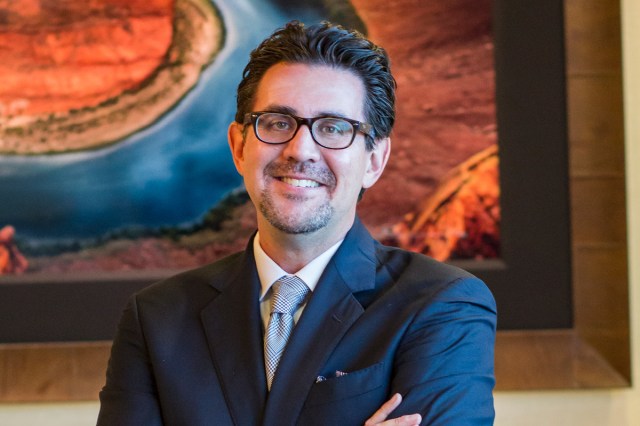
For many of us, the mere suggestion discussing the importance of infrastructure makes us feel like we’re back in high school trigonometry class. I fully admit infrastructure is not the sexiest of topics, but the roadways, bridges, airports, water pipes, flood control basins and other components of our nation’s infrastructure network are critical to our everyday lives. Too often they are taken for granted, a fact at least partially explaining the troublesome state of our nation’s infrastructure, which last year earned a D+ overall grade from the American Society of Civil Engineers. From bridges tumbling into rivers in Minnesota and Washington, to municipal water systems failing to deliver drinkable water in Michigan, infrastructure becomes front page news when it fails to serve its purpose.
Thankfully, here in Nevada so much is going right. The state has remained ahead of the curve in funding and developing the infrastructure necessary to support our growing economy. Could it be that neon lights and showgirls make infrastructure more exciting? Well, showgirls actually did make an appearance at the groundbreaking for the $900 million Project Neon, the state’s largest infrastructure project of all time, so perhaps that helps. The reality, however, is that Nevada’s reliable infrastructure is the product of consistent foresight from local, regional and state planners; dedication from government officials; and support from forward-thinking business leaders.
It may be hard to believe when you’re sitting on Interstate 15 among a sea of red tail lights, but that ongoing commitment and investment is paying off. Over the past eight years, Nevada has added an average of 1,000 miles of new roads and highways each year. That’s more than the entire state of California, and, in fact, only two states (Oregon and South Carolina) added more road miles than the Silver State during that time, according to federal statistics.
The expanded traffic capacity has certainly been welcome as Nevada is again among the fastest-growing states in the country. According to the latest census data, two-thirds of commuting drivers in the Las Vegas metropolitan statistical area get to work in under 30 minutes, the third-best mark among all U.S. metro areas with at least 2 million residents. Another measure, Texas A&M University’s Urban Mobility Scorecard, found southern Nevada’s Commuter Stress Index improved from 19th in 2008 to 31st in 2014 (higher is better). I support reduced commuter stress, as did the voters of Clark County who approved fuel revenue indexing. The additional funding is supporting dozens of regional road construction projects and will continue to do so through 2026, including Interstate 11, which will connect southern Nevada and Phoenix. Projects such as these ensure additional traffic capacity for a booming region with rapidly expanding needs to move people and goods.
No conversation about infrastructure would be complete without mentioning McCarran International Airport. The eighth-busiest airport in the United States, McCarran broke its all-time record in 2017, servicing 48.5 million passengers. McCarran is perhaps the state’s most critical piece of infrastructure, as it provides a crucial link that connects visitors not only to the Las Vegas Strip, but also the university and countless local businesses. The recent development of the $2.4-billion Terminal 3, which was ambitious and forward thinking at a time when critics said it was the wrong project at the wrong time, made 2017’s record passenger volume possible. It also ensures that airport capacity will not be a limiting factor on the community’s ability to grow.
Important infrastructure isn’t limited to transportation. Take the Southern Nevada Water Authority’s third intake. The project drilled 600 feet beneath Lake Mead to install what is essentially a new straw to suck in water even if lake levels decline past a critical point. The seven-year, $817 million-project was not without its challenges, but the foresight to construct it has helped secure the regional water supply as ongoing drought conditions throughout the Western United States put pressure on increasingly scarce water resources.
Even as the economy tumbled and fiscal pressures climbed following the recession, Nevada officials led the push for many of the state’s largest infrastructure projects. Just a few years later, those investments are already paying off, helping Nevada return to a period of population and job growth that outpaces almost anywhere else in the nation. Perhaps the fact that our state’s infrastructure is so commonly overlooked is merely a reflection of how well it has been managed. That said, we should never take it for granted, as it adds immeasurably to our quality of life and is at the very foundation of our economic potential.
Members of the editorial and news staff of the Las Vegas Review-Journal were not involved in the creation of this content.


